As car rentals on-the-spot proved to be extremely expensive, and local buses rather impractical on a limited amount of time, we decided to go with one of the hundreds of minibuses that tour the island every day carrying German grannies from one viewpoint to the other…never mind the German grannies, the “West Tour” that we chose was actually decent value. This is an illustrated overview:
The first stop was the small fisherman’s town of Câmara de Lobos, with its displays of local cat fishes drying in the sun:
The next stop, still on the South Coast is the most impressive viewpoint of Cabo Girão. Located 580m above the sea level, it features a glass platform (which did frighten the German grannies).
The flora around the viewpoint consists mostly of Eucalyptus and Acacias (sigh), though there are some less exotic plants too : the endemic Echium nervosum and the Mediterranean native Bituminaria bituminosa (aka Arabian pea):
After a spot in the unimpressive touristy town of Ribeira Brava and a brief drive through more Eucalyptus forest, we climbed up the central part of the island, and made a stop near Rabaçal. Here the landscape is dramatically different:
And so are the plants. The most common shrubs are the endemic heather Erica scoparia subsp. maderincola, and yet another endemic, Vaccinium padifolium (Madeira blueberry). Other shrubs include gorse (Ulex sp) and brooms (Cytisus scoparius). Among the herbaceous plants, there are many Asteraceae and dry-loving flora such as Erodium cicutarium and Crassula tillaea.
We reach the North Coast around the town of Porto Moniz. Madeirans are certainly used to “extreme gardening”!
The main attraction here is the natural sea water pools, which look amazing:
But the rocks and boulders surrounding the pools are also a good playground for botanists. On this picture you can see many endemics, such as the pink Matthiola maderensis with Helichrysum melaleucum at the back. The groundcover with bluish leaves and orange flowers is Lotus glaucus, while the one with larger, yellowish leaves is Aptenia cordifolia.
Other interesting records include these two daisies, Tolpis succulenta (with thick fleshy leaves), and the sticky Andryala glandulosa ssp. varia.
The next stop of our tour was the waterfall at Seixal. Whilst it is apparently very impressive in the rainy season, it wasn’t so much when we visited.
The flora growing on the cliffs here is very interesting though. From left to right an Helichrysum, pink rosettes of Aeonium glandulosum and the – guess what – endemic Sonchus ustulatus subsp. maderensis:
Here’s a close-up view of Aeonium glandulosum, because it is just so pretty. The beads at the tip of the leaves are trichomes (glandular hair) – their function is not yet confirmed.
The trip ended in the small town of São Vicente, as a much-needed last stop for the German grannies to buy souvenirs. A large canal there brings water down from the mountains, and the bridge overlooking the valley is filled with Aeonium glutinosum rosettes:
But what I really want to finish my post with is this view of a lush and almost untouched valley that we crossed before reaching São Vicente:
Not convinced that you should visit Madeira? I have one last post to convince you 🙂
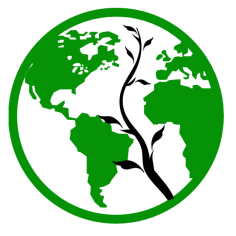
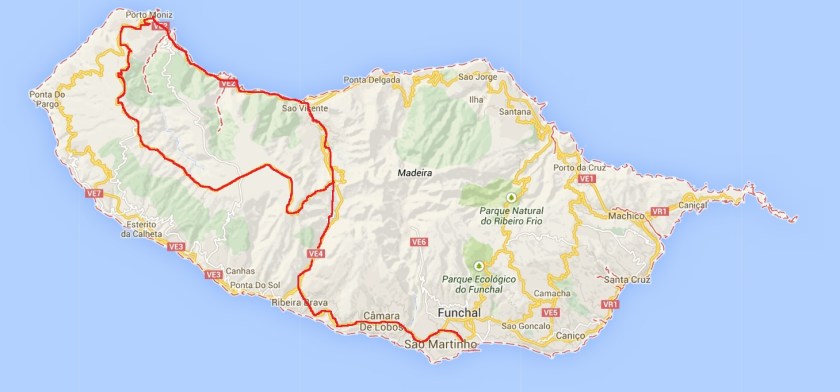




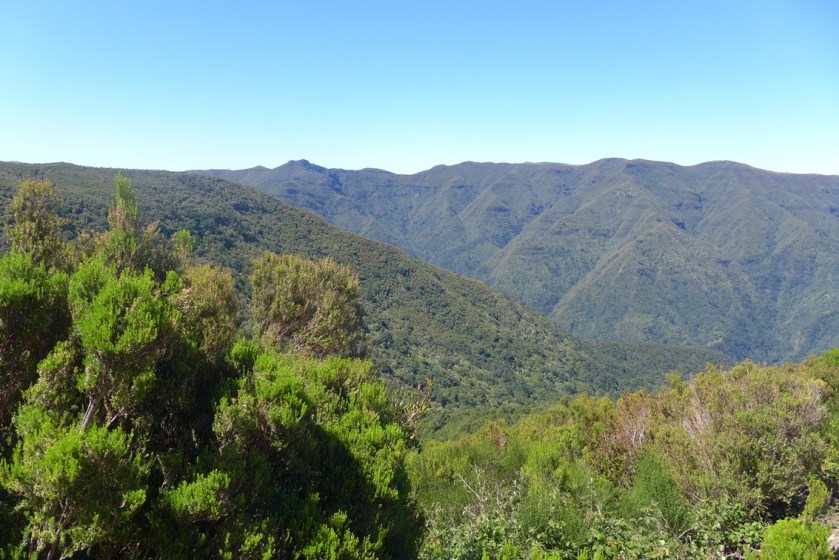



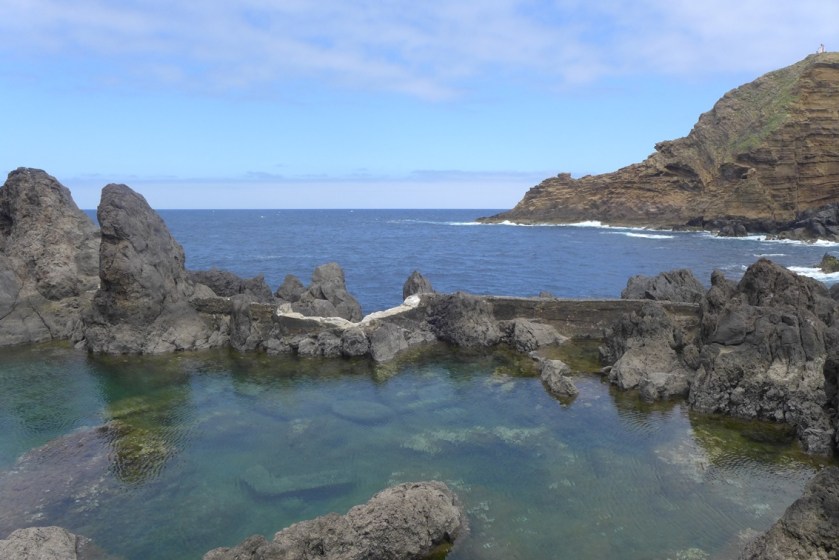
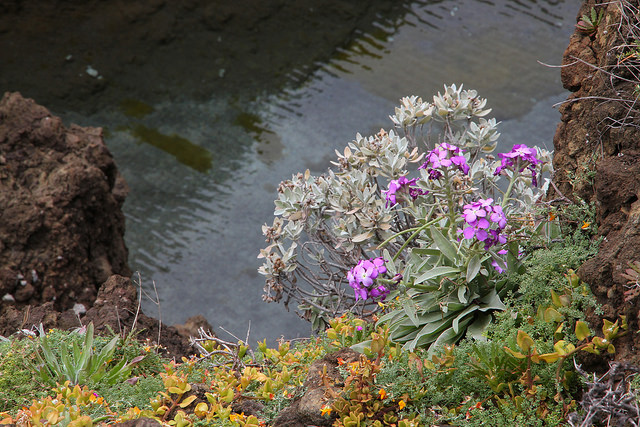


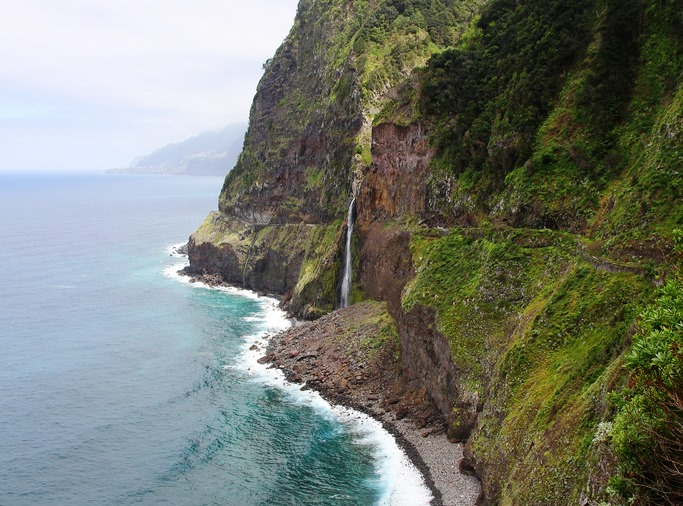


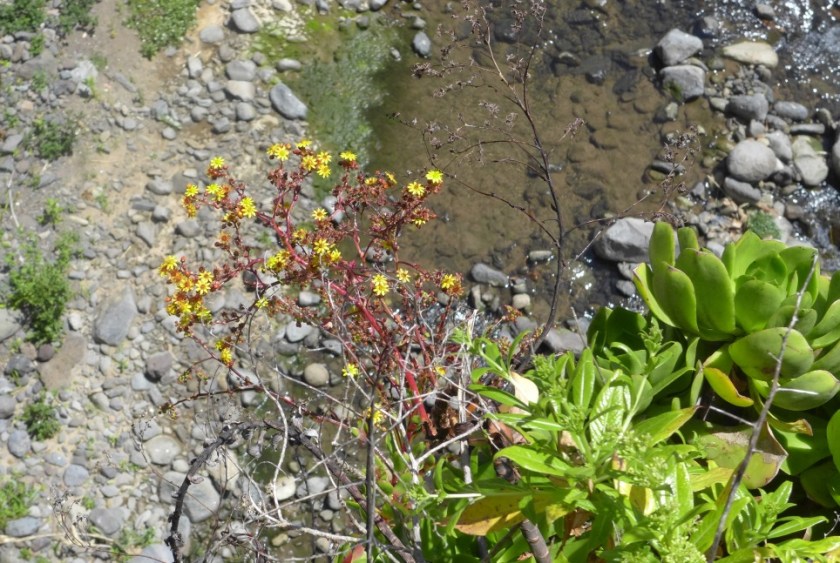

Nice photos. To me, it already looks like a great place to visit. 🙂
The flora is amazing. Great photos! I think you’ve convinced me that I should visit Madeira, but another post is always welcomed. =P